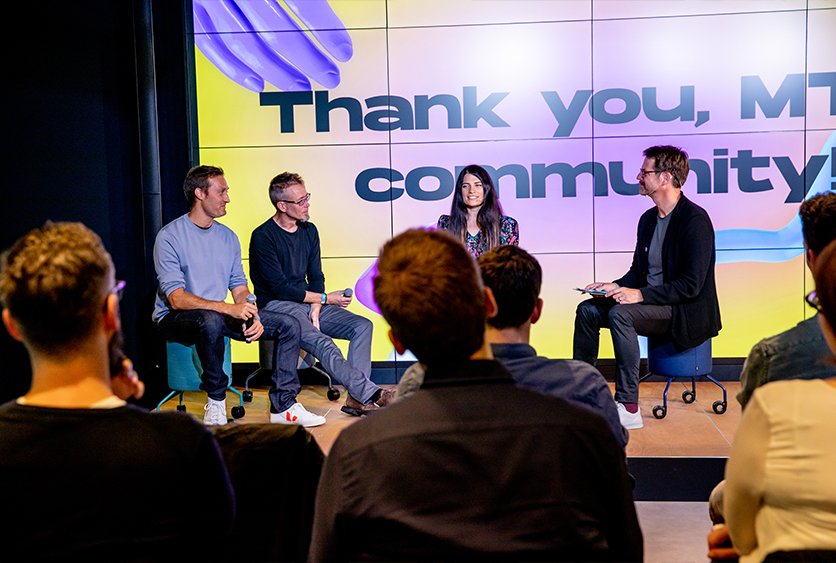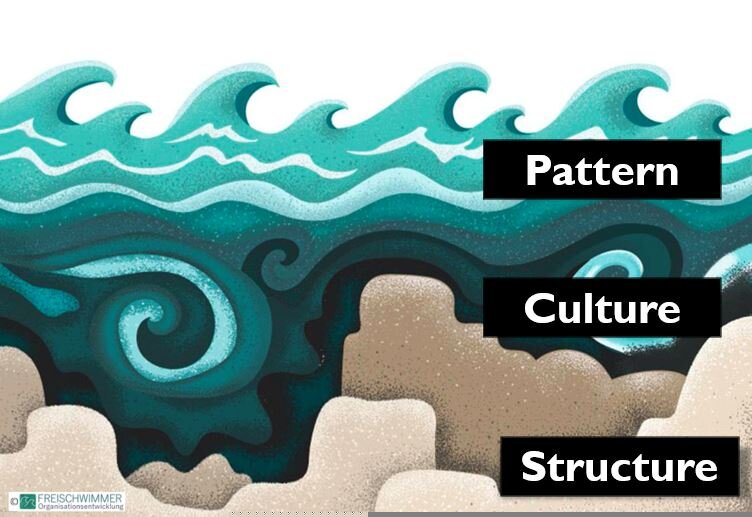MTP Engage Leadership Forum—My 5 Takeaways
What usually happens in June happened at the end of September this year. Due to the COVID situation, our MTP Engage Leadership Forum made its first autumn premiere. Arne Kittler and I are the organizers of MTP Engage Hamburg and we had the pleasure of hosting the first Mind the Product in-person event since the pandemic hit.
Here is my TL;DR version of my key learnings from this half-day event (if you want the full-length version, you’ll find it below!).
I missed people!
I missed being a conference host.
It takes a lot of time to come up with a compelling strategy and the narrative that makes it stick.
Ditching a company’s hierarchy is a long and winding road that leads into chaos if you don’t create a new set of rules for working together or reflect on whether the current org structure supports new ways of working.
Sometimes it takes a brave product leader to share their story to remind all of us that we have to take care of our own well-being.
It was such a pleasure to re-join my co-host Arne to welcome attendees to the event.
I missed people!
It was so good to be in a room with 50 other product leaders to discuss the topics that are relevant to us. I saw many new faces and old friends and everyone seemed genuinely happy to be at such an event.
I missed being a conference host.
Arne and I ran our first MTP Engage Hamburg event in 2017 and immediately fell in love with the craziness of the event organizer role. It's like product management on steroids—you create an experience with a huge team (even for a small event like the Leadership Forum, the team consisted of around 10 people) for many people for a very limited amount of time. And you have hard deadlines tied to all activities. But it is a lot of fun as well (if everything works out) and very rewarding. I’m so happy that we are able to do in-person events again. We hopefully will be able to host the full conference in June 2022.
People enjoyed spending time together in person after working out of their home offices for more than a year.
The Leadership Forum is not all about keynotes—we love to hear as many voices as possible in our panel discussions and Q&A sessions. This is the panel after Megan Murphy’s talk.
It takes a lot of time to come up with a compelling strategy and the narrative that makes it stick.
In her talk, Megan Murphy described her product strategy creation process at Hotjar. .She started by explaining her role at Hotjar and that she invests 50% of her time in internal communication. And from my experience of people working with her, I know that this is true. She really makes sure that her message sticks. She explained to us how she does it: “You need to prime a wall before you actually paint it.” She is super intentional about the whole process of creating and sharing the product strategy.
One part of the process and an aha moment for me was that she plans plenty of alignment and feedback sessions with all the people interested and involved in the strategy creation process. And this starts with aligning on the process of how to come up with the strategy before even starting the actual work of creating it.
This is how I explained the various steps of coming up with a product strategy in my book, STRONG Product People.
Björn Waide giving his talk, “Org Charts Eat Culture for Breakfast: Why an Agile Mindset Alone Won’t Help You.”
Ditching a company’s hierarchy is a long and winding road.
Björn Waide described how eliminating hierarchy can lead to chaos if you don’t take the time to create a new set of rules for working together.
It’s not only rules that are an important part of cultural change. Björn explains how the organization used the ocean as a metaphor to highlight that structure is what it’s all about: “You notice something is wrong with the business by looking at the waves on the surface, such as job retention or lack of productivity. While this is the most visible part of the issue, the culture and ultimately the structure are the underlying obstacles that create the waves.”
So it is on us, the product leads, to be honest with ourselves and check if the team topology supports the culture we want to create—even if no one likes to add “another re-org” to our management to do list! My advice here: Dtch institutional ego and don’t be too inwardly focused when looking at your org’s structure. Try to look outwards, putting the users and customers at the heart of everything—even at the heart of your org structure.
One slide Björn shared with us highlighting the importance of the right structure when looking at topics related to culture.
It sometimes takes a brave product leader to share their story to remind all of us that we have to take care of our own well-being.
In Dominique Jost’s talk, he shared his very personal experience of burning out, plus a framework for assessing your own stress level. He talked about the three elements of stress: external events that are causing stress (stressors), conditions that amplify the stress (amplifiers), and our reactions to stressful events and situations. And he explained that you have to try to limit the stressors, reflect on the amplifiers, and make sure you are recharging your batteries every now and then to improve your ways of dealing with stress.
Dominique Jost sharing his very personal story about mental health and well-being as a product leader.
Still hungry for more? Read what others have shared about the conference:
Tobias Freudenreich’s learnings of the day: https://www.mindtheproduct.com/5-lessons-in-product-leadership/
Write-up of Megan’s talk by Eira Heyward: https://www.mindtheproduct.com/beating-the-drum-of-your-product-strategy-tune-by-megan-murphy/
Write-up of Björn’s talk by Lauron Pratt: https://www.mindtheproduct.com/org-charts-eat-culture-for-breakfast-by-bjorn-waide/ (For MTP Leadership Members)
Write-up of Dominique’s talk by Eira Heyward: https://www.mindtheproduct.com/self-care-and-stress-management-for-product-leaders-by-dominique-jost/
Keep up to date on all the events and projects I’m involved with on my /now page here.






